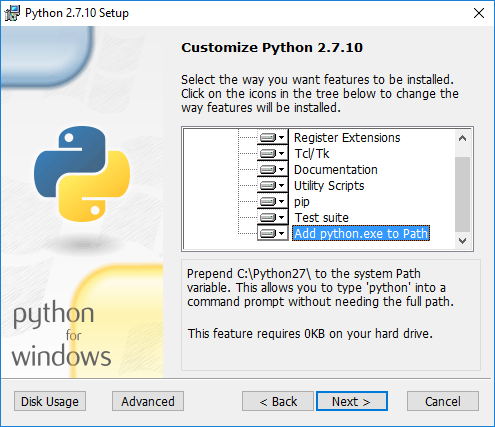Ssl Setup Apache Windows Python


Torrent Code Quantum Saison 2 Zoo. Install Python. You can get Python from the following: Configure Apache to run Python CGI. The next step is to use EditRocket to open the httpd.conf apache configuration file located in the apache install directory in the conf directory. Restart Apache. Run a test Python page. Feb 20, 2017. Tutorial on how to add Perl CGI Script Support to Your Apache Server on Windows.
MAMP installs a local server environment in a matter of seconds on your computer. It comes free of charge, and is easily installed. MAMP will not compromise any existing Apache installation already running on your system. You can install Apache, PHP and MySQL without starting a script or having to change any configuration files!
Furthermore, if MAMP is no longer needed, just delete the MAMP folder and everything returns to its original state (i.e. MAMP does not modify any of the 'normal' system). Licensing Similar to a Linux-Distribution, MAMP is a combination of free software and thus it is offered free of charge. MAMP is released under the GNU General Public License and may thereby be distributed freely within the boundaries of this license.
Please note: some of the included software is released using a different license. In these cases, the corresponding license applies. Perl is a family of high-level, general-purpose, interpreted, dynamic programming languages. Perl was originally developed by Larry Wall in 1987 as a general-purpose Unix scripting language to make report processing easier. For many years Perl was the preferred programming language for Unix administrators and Unix developers.
Because of its popularity Perl was used more and more as a web programming language for creating CDGI-Scripts. MAMP integrates Perl by using mod_perl which means perl scripts can be executed outside of cgi-bin.
Create SSL Certificates for Apache Requirements • This tutorial provides an approach on how to set up Secure Sockets Layer (SSL) communication cryptographic protocol on Apache Web Server installed in Red Hat Enterprise Linux/ CentOS 7.0, and generate self-signed Certificates and Keys with the help of a bash script which greatly simplifies the entire process. Step 1: Install and Configure Apache SSL 1.
To enable SSL on Apache HTTP Server use the following command to install SSL Module and OpenSSL tool-kit which is needed for SSL/TLS support. # yum install mod_ssl openssl. Test SSL Connection Step 2: Create SSL Certificates and Keys 4. The previous SSL communication between the server and client was done using a default Certificate and Key automatically generated on installation. In order to generate new private keys and self-signed certificates pairs create the following bash script on a executable system path ( $PATH). For this tutorial /usr/local/bin/ path was chosen, make sure the script has executable bit set and, then, use it as a command to create new SSL pairs on /etc/httpd/ssl/ as Certificates and Keys default location.
# nano /usr/local/bin/apache_ssl Use the following file content. #!/bin/bash mkdir /etc/httpd/ssl cd /etc/httpd/ssl echo -e 'Enter your virtual host FQDN: nThis will generate the default name for Apache SSL Certificate and Key!' Read cert openssl genpkey -algorithm RSA -pkeyopt rsa_keygen_bits:2048 -out $cert.key chmod 600 $cert.key openssl req -new -key $cert.key -out $cert.csr openssl x509 -req -days 365 -in $cert.csr -signkey $cert.key -out $cert.crt echo -e ' The Certificate and Key for $cert has been generated! NPlease link it to Apache SSL available website!' Ls -all /etc/httpd/ssl exit 0.